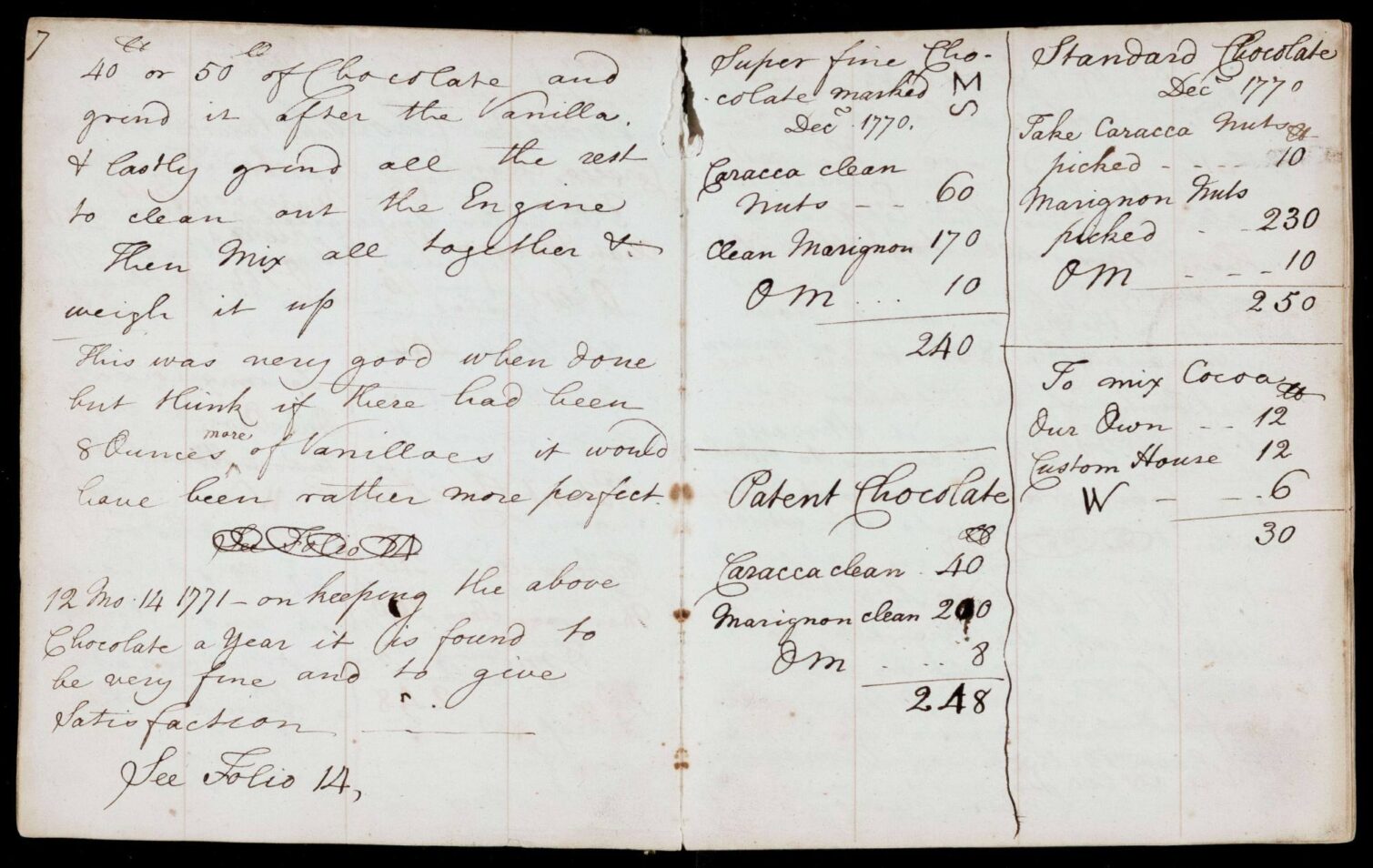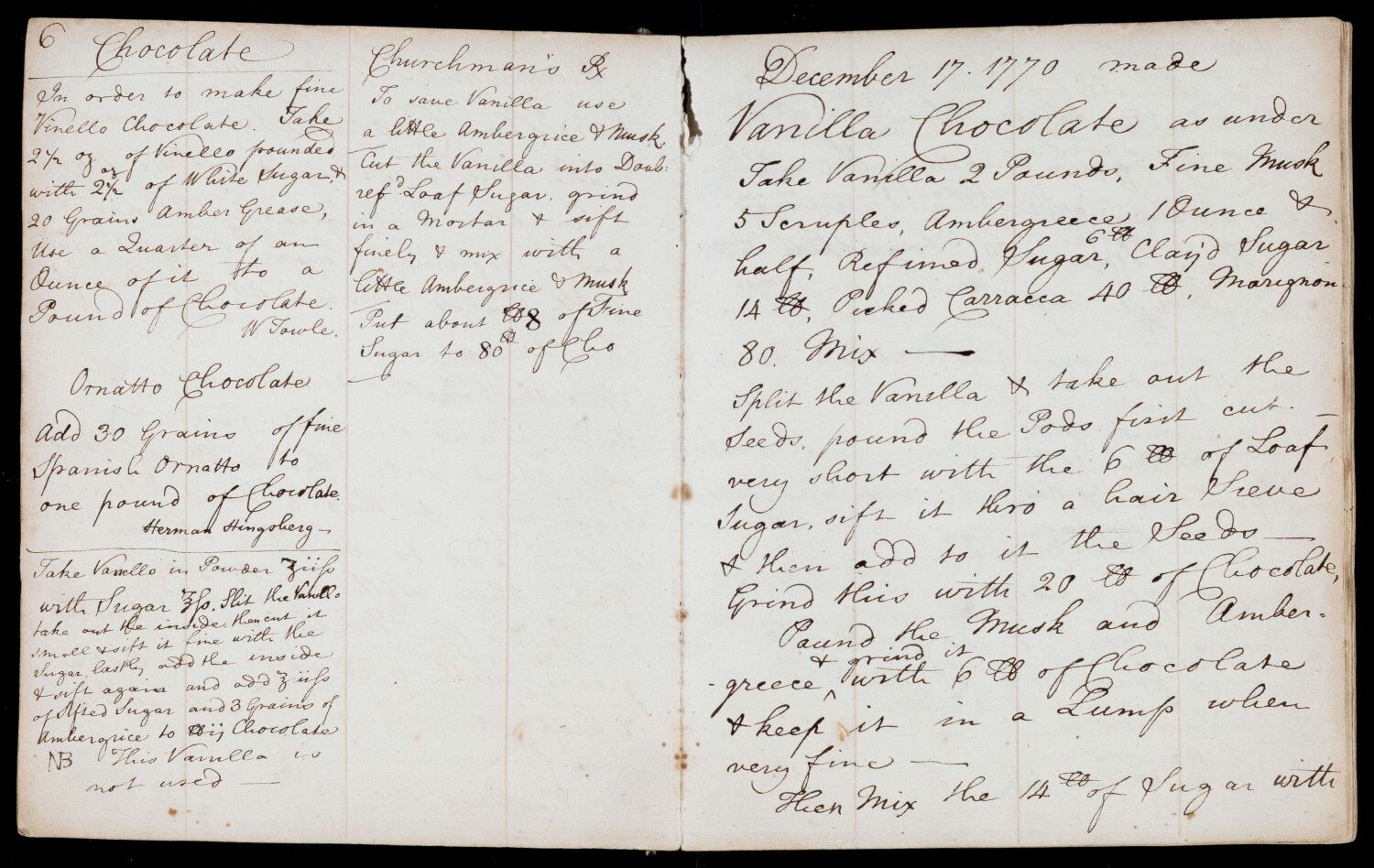Unwrapping a piece of history: making chocolate in Food and Drink in History
Many of us may have spent the last few days surrounded by a glut of chocolate eggs – large or small, hidden or not, the chocolate Easter egg has become a staple springtime treat.
They appear in supermarkets almost as soon as the last Christmas crackers begin to gather dust, but how often do we stop to think about where they come from, and the companies that make them?
Though chocolate eggs are first thought to have appeared in the eighteenth century at the French court at Versailles, a more attainable Easter egg was introduced to the masses in 1873 by the British chocolatiers, J. S. Fry and Sons. At the time, this innovation may have been the nineteenth-century equivalent to one of Willy Wonka’s inventions, however, this was not Fry’s first experiment with confectionery.
Documents digitised from the J.S. Fry & Sons collection at Bristol Archives, included in Food and Drink in History, swing open the factory doors and shed light on the processes by which Fry’s developed products which remain a mainstay in British corner shops and kitchen cupboards today.
Documents such as the Recipe book (1770-1779) reveal the trial and error behind each finished product. The manuscript book includes a recipe for vanilla chocolate, to which two notes were added:

Recipe book (1770-1779) © Material sourced from the Bristol Archives. Further reproduction is prohibited without permission.
This was very good when done but think if there had been 8 Ounces more of Vanillaes (sic) it would have been rather more perfect.12 Mo. 14 1771 – on keeping the above Chocolate a year it is found to be very fine and to give satisfaction.
Other documents in the collection reveal the process by which some very familiar products were first produced and refined by the company. For example, recipes in Makings Book, 1885-1888 for cream and “stick” chocolate are clear ancestors of the classic Chocolate Cream bar still sold today, which was first sold in its current shape in 1875.
The Makings Books, together with the Tasting Room book and other documents in the collection, allow researchers to see how recipes evolved, with different types of cocoa, spices and sugar used to perfect the products. Food and Drink in History offers similar opportunities for researchers to study handwritten and printed cookbooks, menus, periodicals and visual materials from the last five centuries.
Other beloved brands featured in the collection include Heinz, Jell-O and Birdseye.

Recipe book (1770-1779) © Material sourced from the Bristol Archives. Further reproduction is prohibited without permission.
Although many of the items may no longer be in production, the documents give a fascinating, and very personal insight into manufacturing processes and decisions, contemporary fashions and tastes in confectionery and changes in the chocolate industry over the centuries of Fry’s work. They might also provide some food for thought as you crack open any remaining Easter eggs…
About the collection
Food and Drink in History is out now.
Recent posts

The blog highlights American Committee on Africa, module II's rich documentation of anti-apartheid activism, focusing on the National Peace Accord, global solidarity, and student-led divestment campaigns. It explores the pivotal role of universities, protests, and public education in pressuring institutions to divest from apartheid, shaping global attitudes toward social justice and reform.

This blog examines how primary sources can be used to trace the impact of young voices on society, particularly during pivotal voting reforms in the UK and the US. Explore materials that reveal insights into youth activism, intergenerational gaps, and societal perceptions, highlighting their interdisciplinary value for studying youth culture, activism, and girlhood across history.
